A reverse video search lets you find videos on the web. But it can do more than that.
It can help you grow your brand, too.
Learn how to reverse search a video using popular tools. To identify copyright infringement, backlink opportunities, and content ideas.
What Is a Reverse Video Search?
A reverse video search is when you use an image from a video—like a thumbnail—to find webpages that feature the video. Different search engines and tools enable you to perform these searches.
Here’s how a reverse video search looks on Google:

This type of search can provide the original source of the video (as shown above) and other places the video has been published. Along with related content.
It’s similar to a reverse image search, where you search for similar images online. Like this:
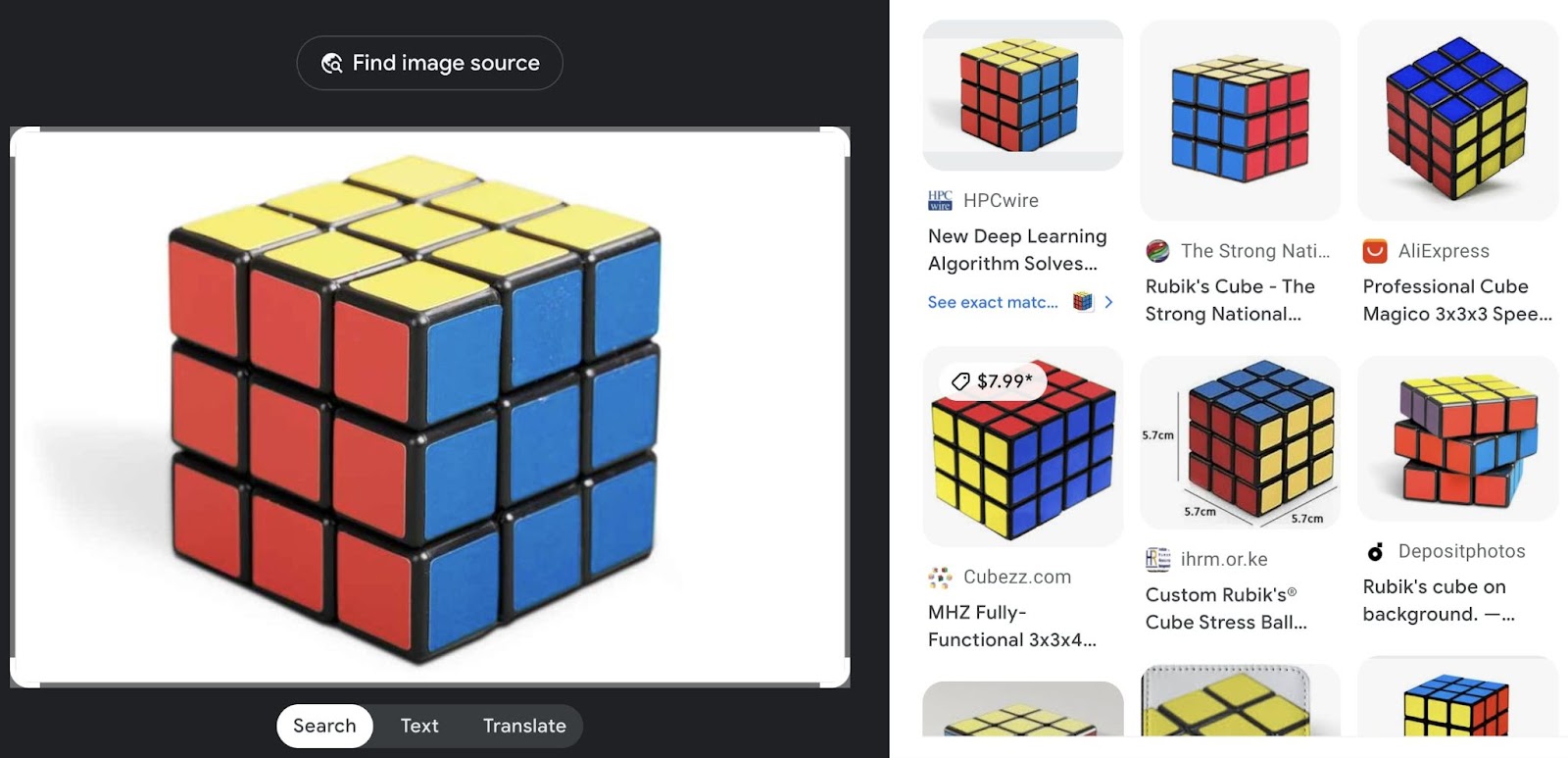
And a reverse video search differs from traditional search that uses keywords and phrases to search for videos. Like this:
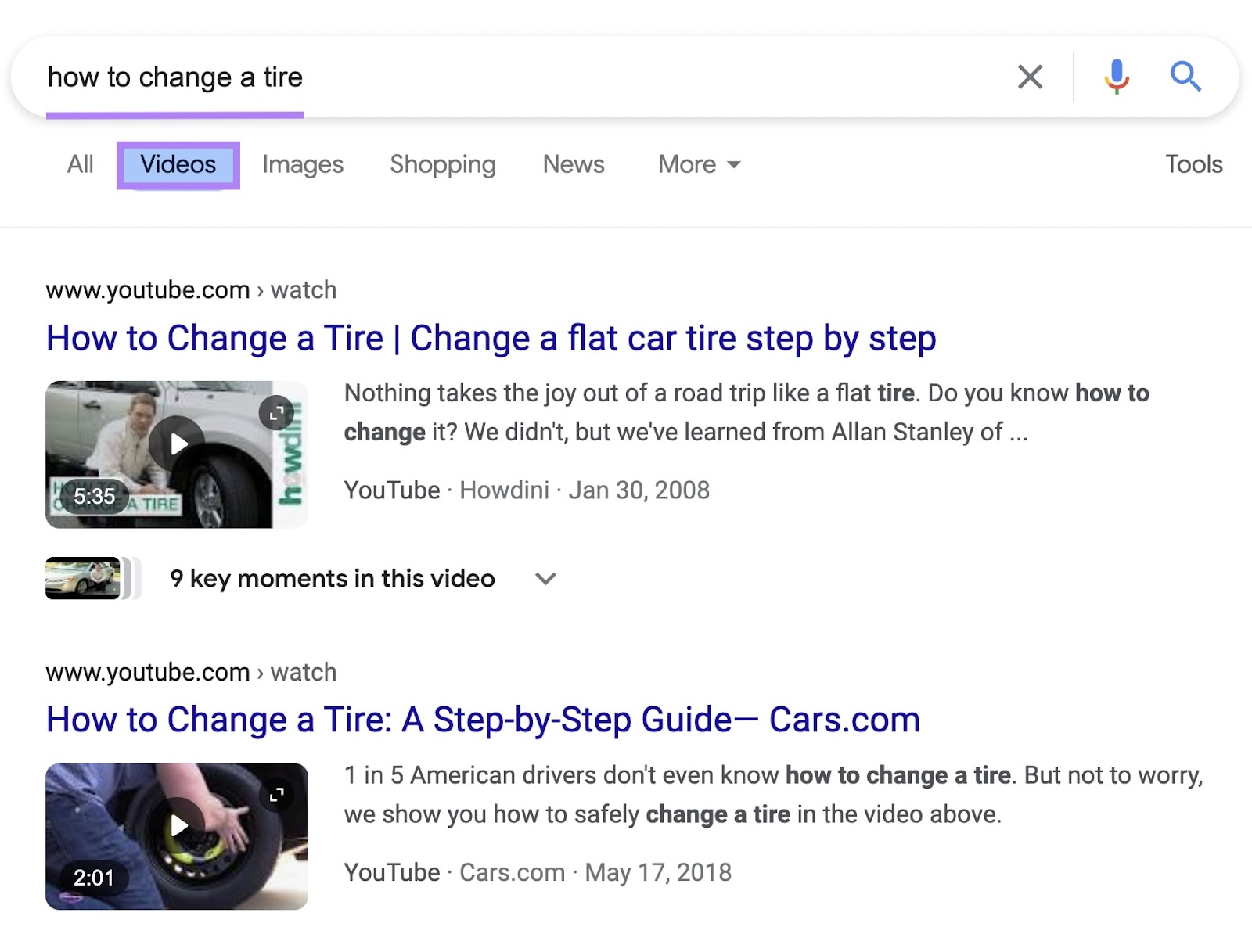
How Does Reverse Video Search Work?
Google and other search engines store—or index—thumbnails from videos in their databases.
And when you upload a video’s thumbnail for a reverse video search, the tool uses algorithms to analyze the colors and pixels in the photo.
Then, the tool references its index to display similar matches in your search results.
The caveat is you usually need to search for videos using a thumbnail—not a video.
Here’s why:
Search engines don’t index all of the frames from videos because it’s uneconomical. And would require the storage of quadrillions of images.
They usually only index a video’s thumbnail. If the video doesn’t have one, Google will extract a frame from the video to use as its thumbnail.
This is why you might not find videos if you search using screenshots from random points in the video. Because those frames aren’t likely indexed anywhere.
Further reading: Video SEO: How to Get Your Videos Ranked on Google
How to Reverse Search a Video on Desktop
Use one—or more—of the tools below to perform your reverse search.
1. Google
Conduct reverse video searches on Google using its Image Search.
Here’s how:
Navigate to Google Images and select the camera icon to search by image:
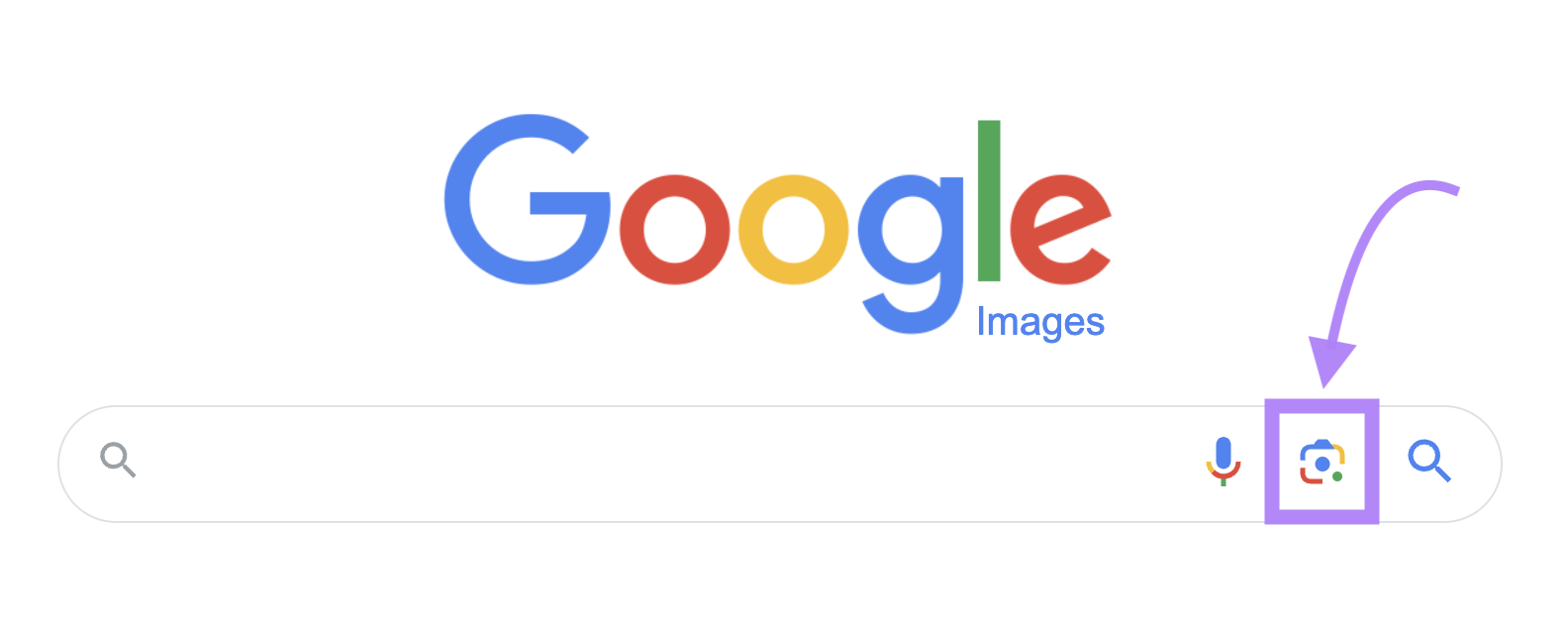
Upload the video image.
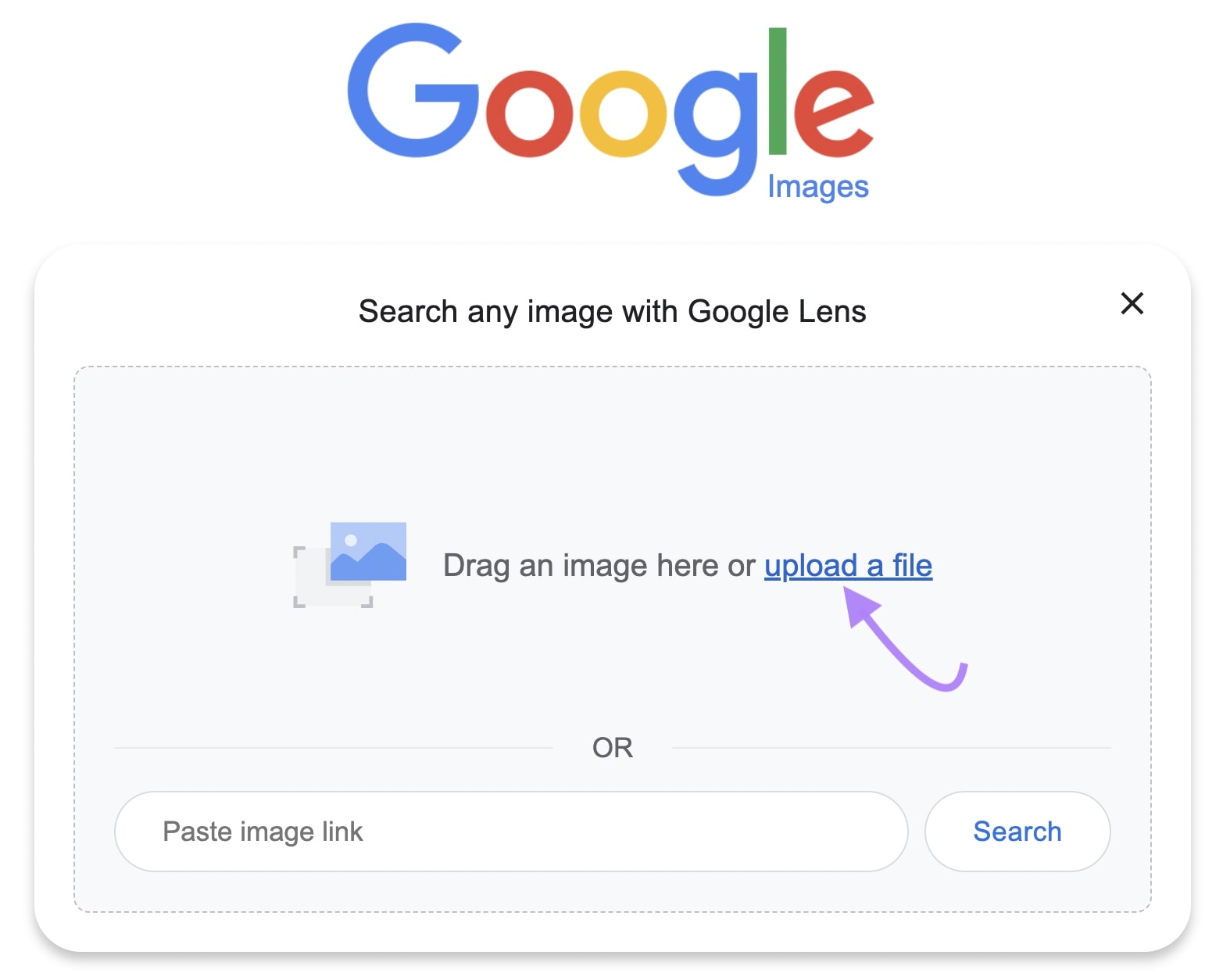
Google will search its database and find similar images. Click “See exact matches” to view all instances of the video (including its original source).

If you’re searching for your own video content, the “exact match” search can help you find other websites that have posted your video.
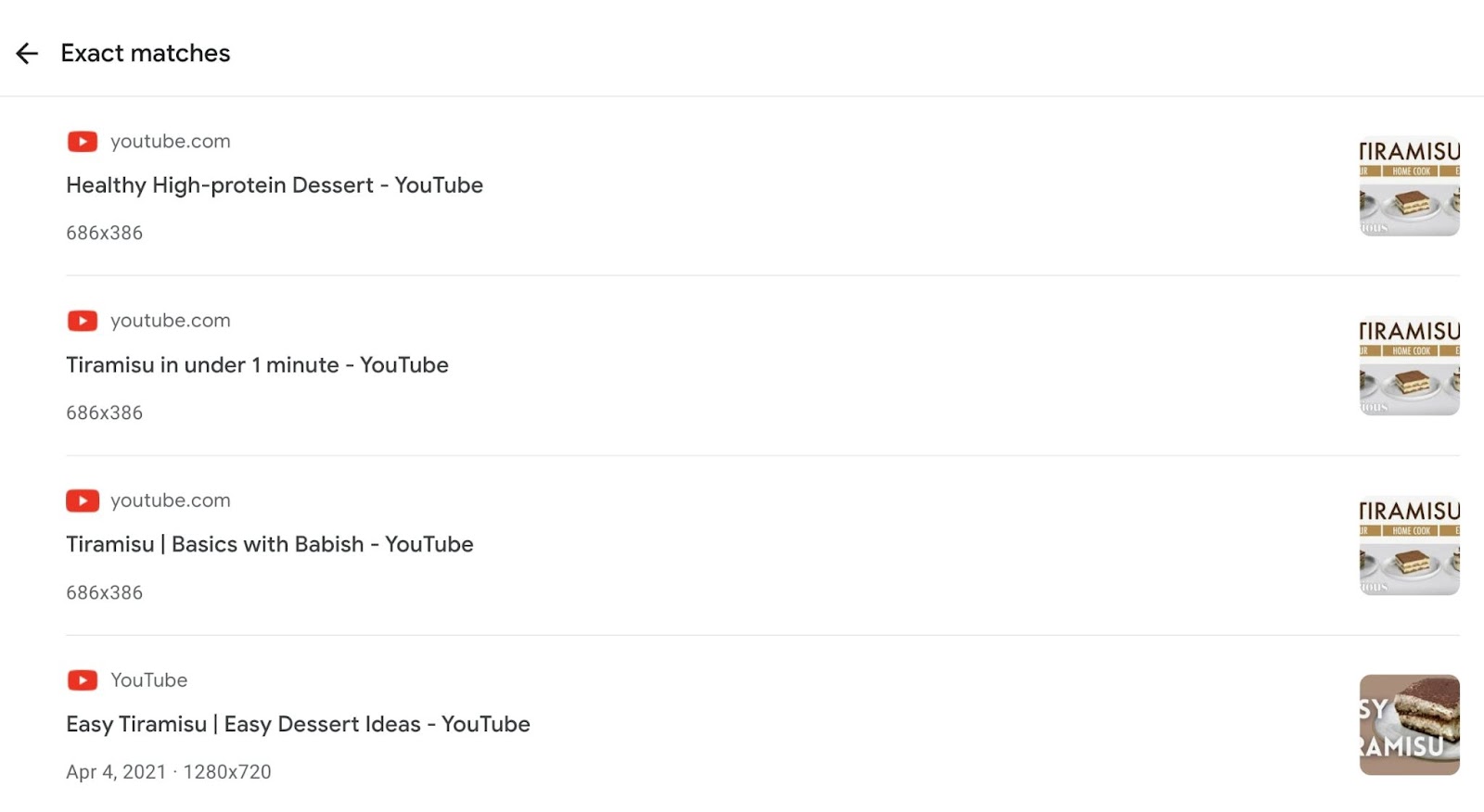
2. Bing
Bing is another search engine that can perform reverse video searches.
To get started, head to Bing’s Visual Search and upload the video’s image.

Bing will display a list of relevant images. Which might help you find the video’s original source. Or give you ideas for related content.

3. TinEye
TinEye is a tool specifically made for reverse search. Its paid plan alerts you when one of your images or videos appears on a webpage. So you don’t have to manually perform this task.
To use TinEye, open the website and upload your image.
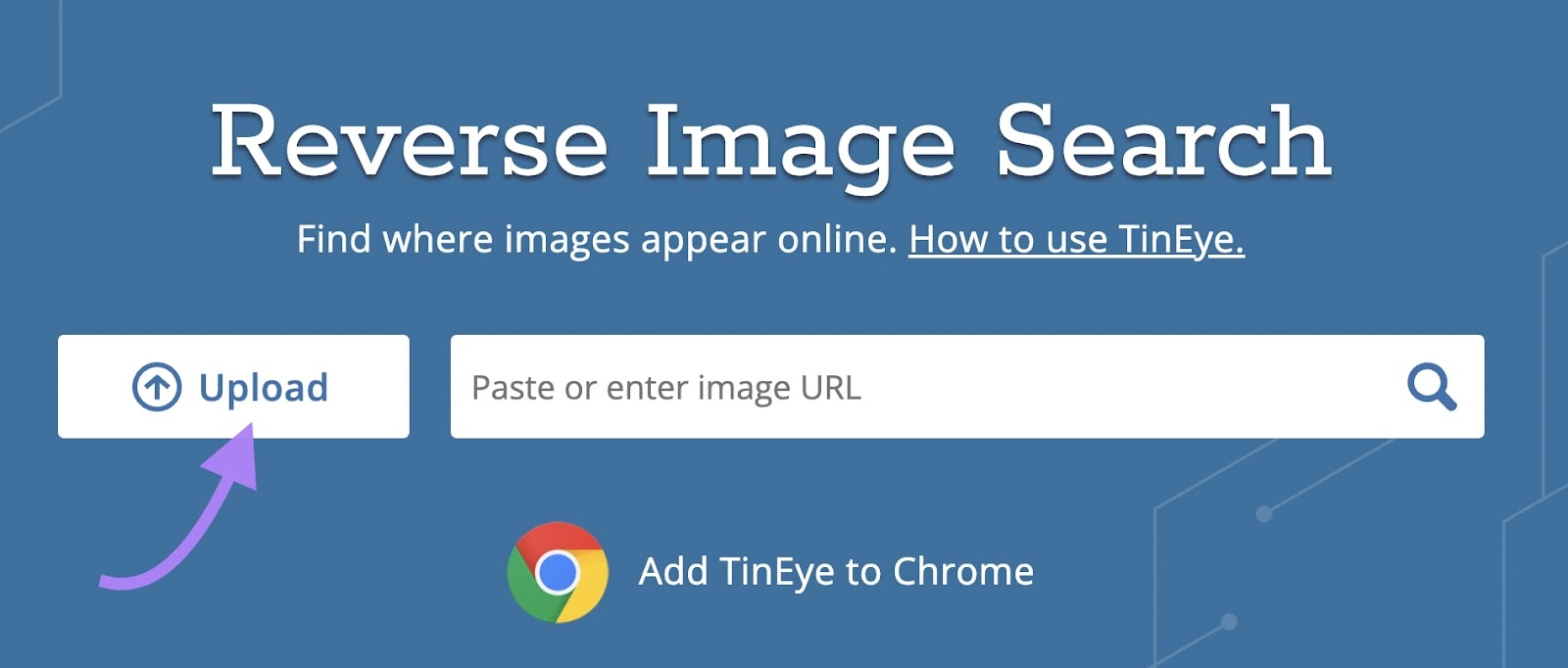
TinEye displays a list of similar images. Enter a website into the search bar (like reddit.com) to filter your results by a specific domain.
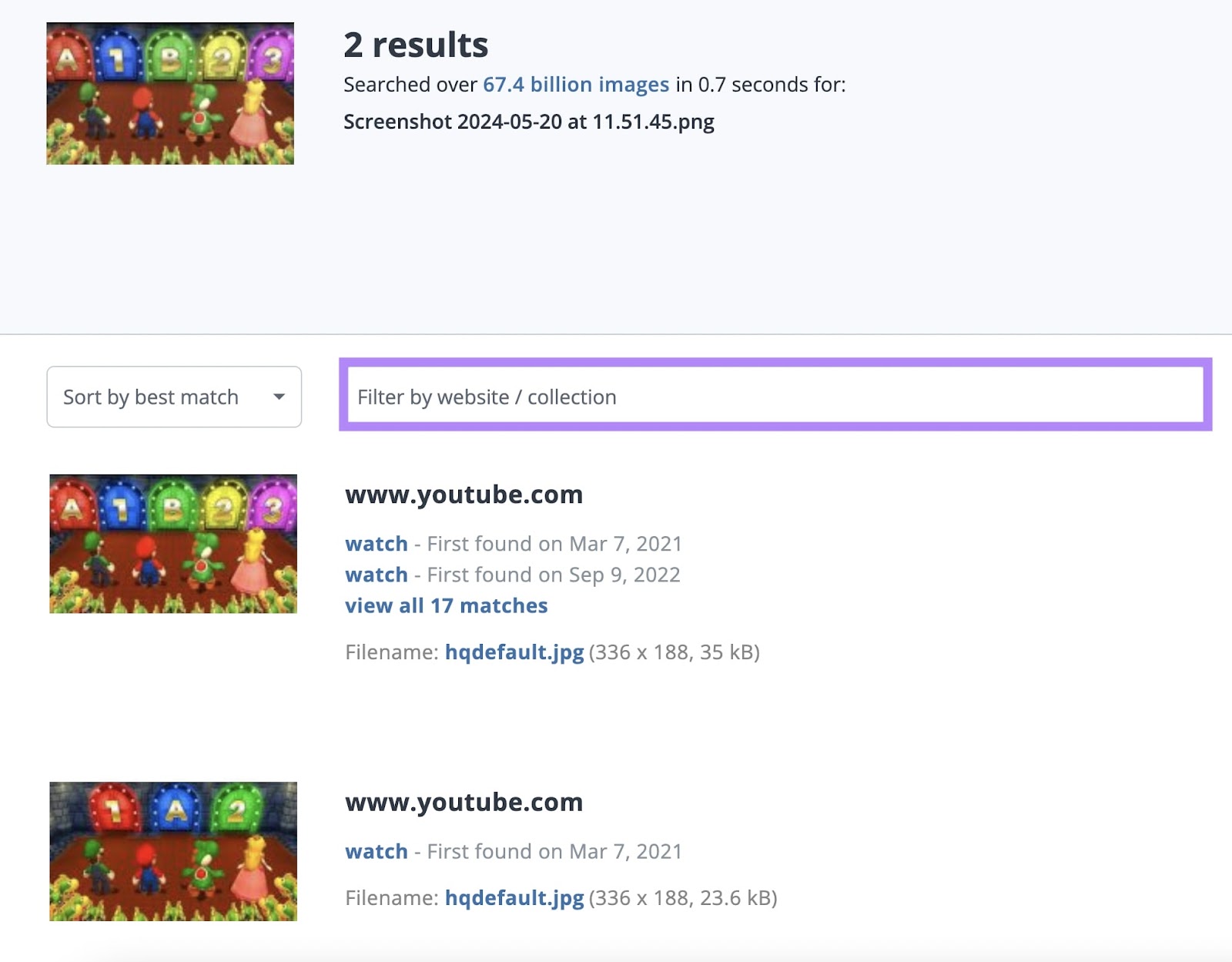
4. SmallSEOTools
SmallSEOTools performs reverse video searches for three different search engines at once: Google, Bing, and Yandex.
The free version allows you to upload one image at a time. While the premium version allows you to upload multiple images at once.
Head to the tool and upload your video’s image. And click “Search Similar Images.”
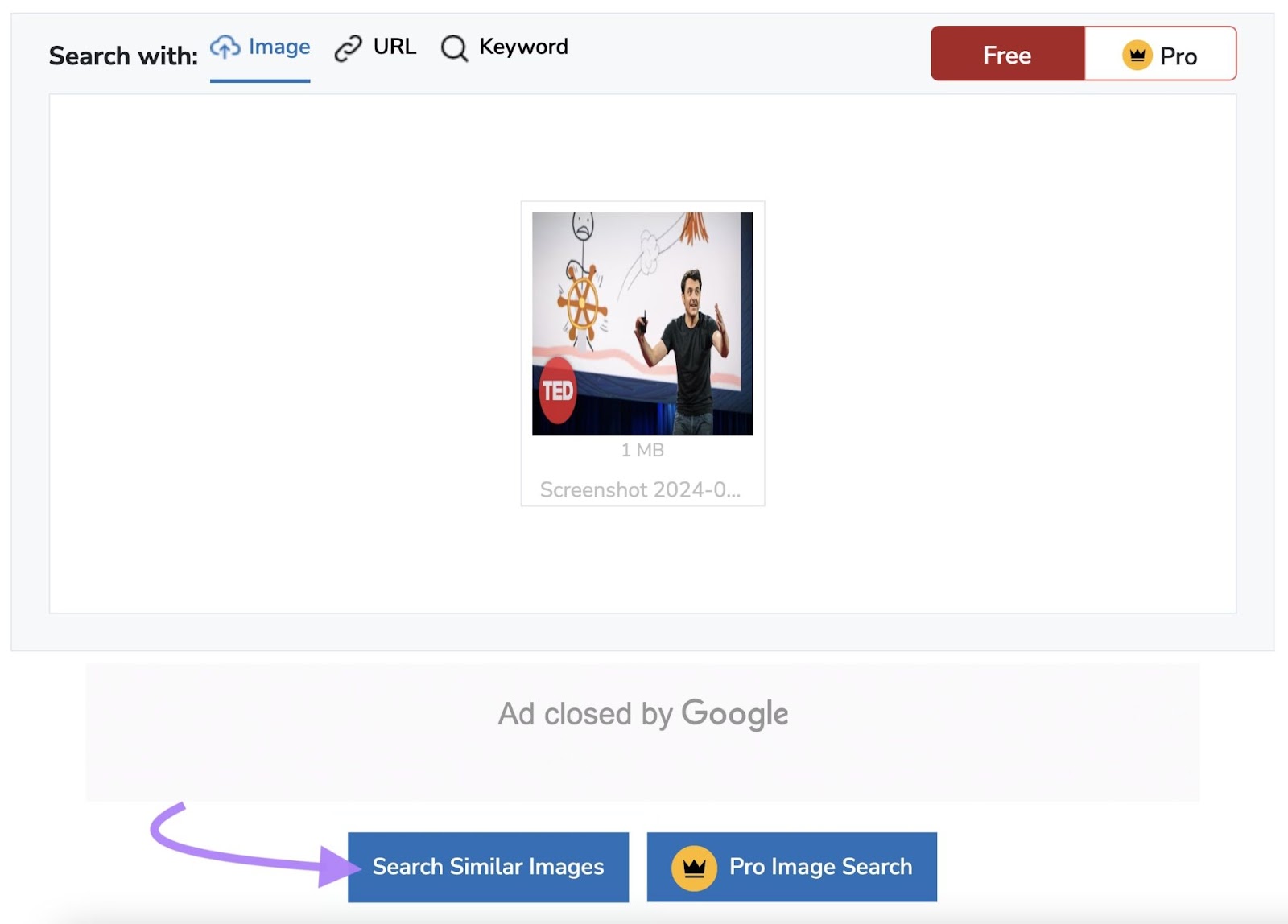
To view the results, click “Show Matches” for each search engine.
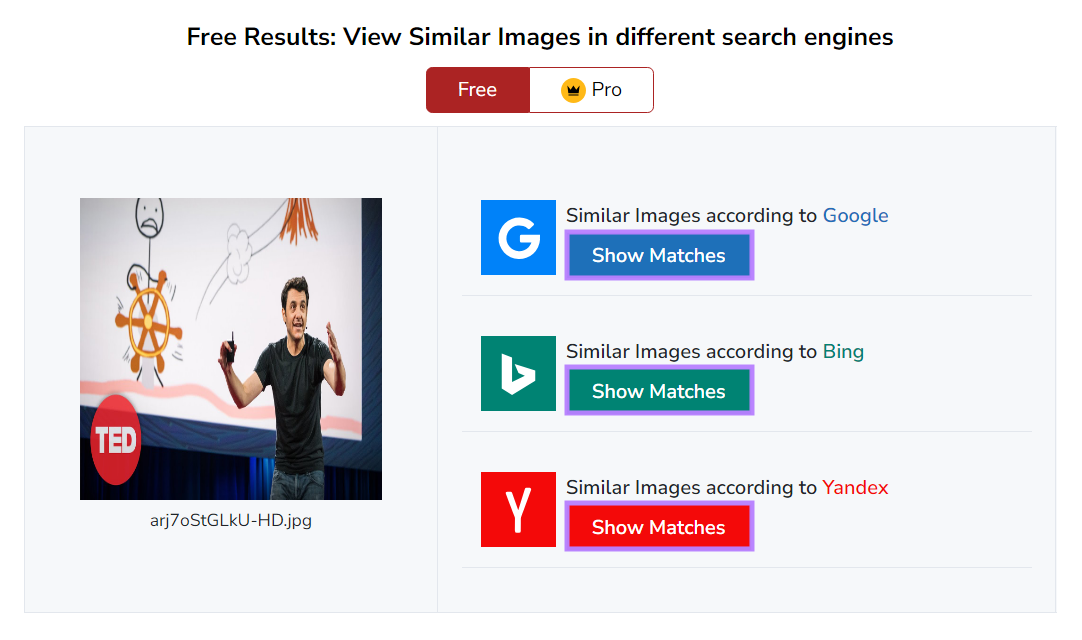
5. Shutterstock
Shutterstock can reverse video search for videos within their own database.
Say you’re watching a video that has stock footage. And you want to use the same stock footage in your content. Take a screenshot of the stock footage and use Shutterstock to find similar stock videos.
Here’s how.
Head to Shutterstock’s Reverse Image Search for Video. Click “Search by image” and upload your image.

Shutterstock will return stock videos similar to your image that you can purchase to use in your own content.

Reverse Video Search on Mobile: iOS and Android
Running a reverse video search on mobile devices is similar to desktop searches.
First, get a screenshot from the video you want to reverse search:
- To take a screenshot on an iPhone, press the power button and the “volume up” button simultaneously
- To take a screenshot on an Android phone, press the power button and “volume down” button simultaneously
Then, use the following apps to do a reverse video search with your screenshot:
- Google (iOS, Android)
- Image Search: Reverse Search (iOS, Android)
- Reverse Image Search- Multi (Android)
- Reverse Image Search App (iOS)
Why Use a Reverse Video Search?
Backlink Opportunities
A video reverse search shows you if other websites have your video embedded on them. So you can ask for attribution and a backlink—which can help your site and video rank higher in search results.
Once you have a list of sites to contact, our Link Building Tool makes it easy to perform outreach.
To start, configure the tool using our Link Building Tool configuration guide.
Then, add the domains that don’t link to your video to your “Prospects” list in the tool. And draft and send a personalized email asking for a link.
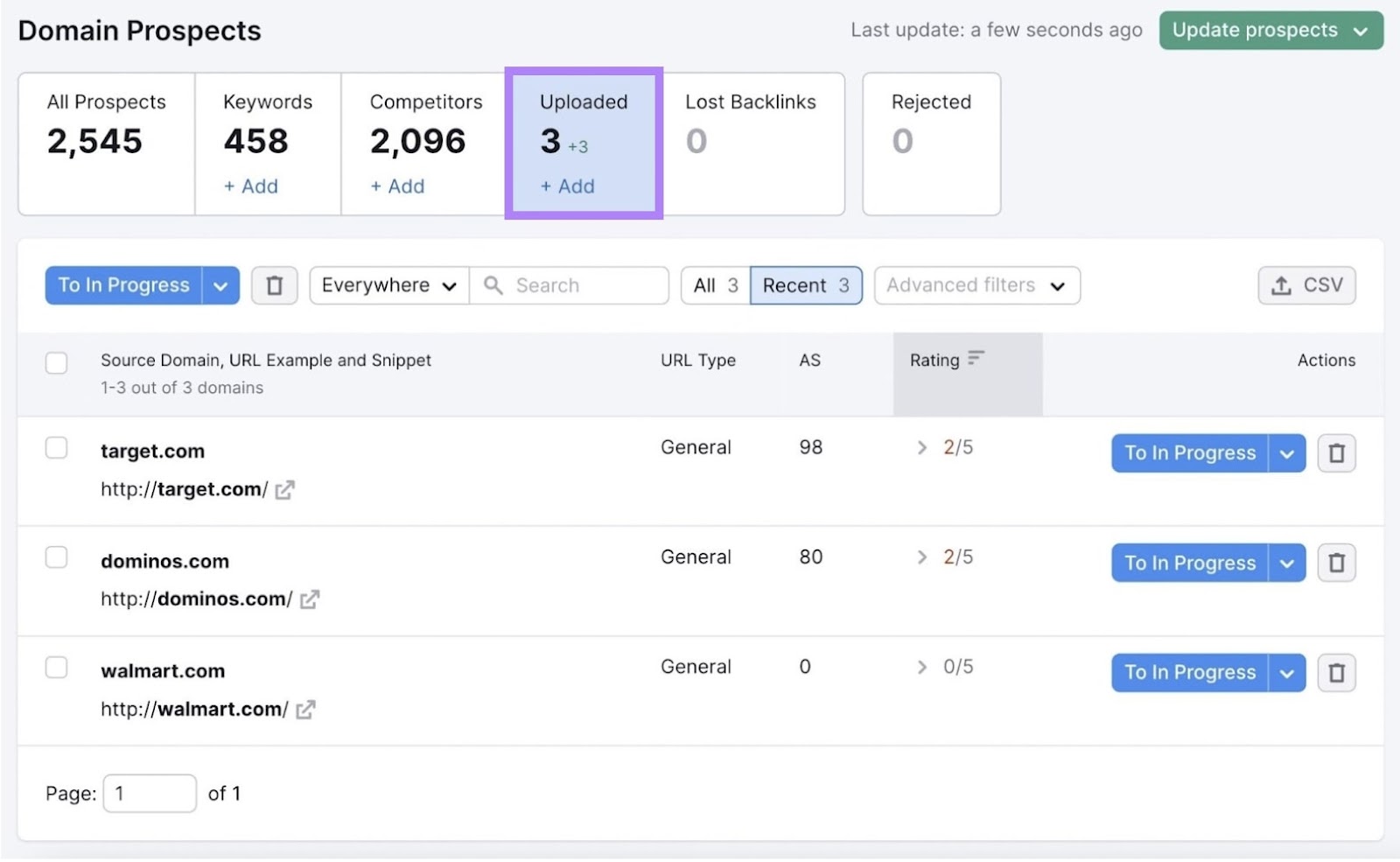
Use Semrush’s Backlink Analytics to monitor your outreach campaign’s results. View the report to see all the domains linking to your video (look for your video’s URL in the “Anchor and Target URL” column”).
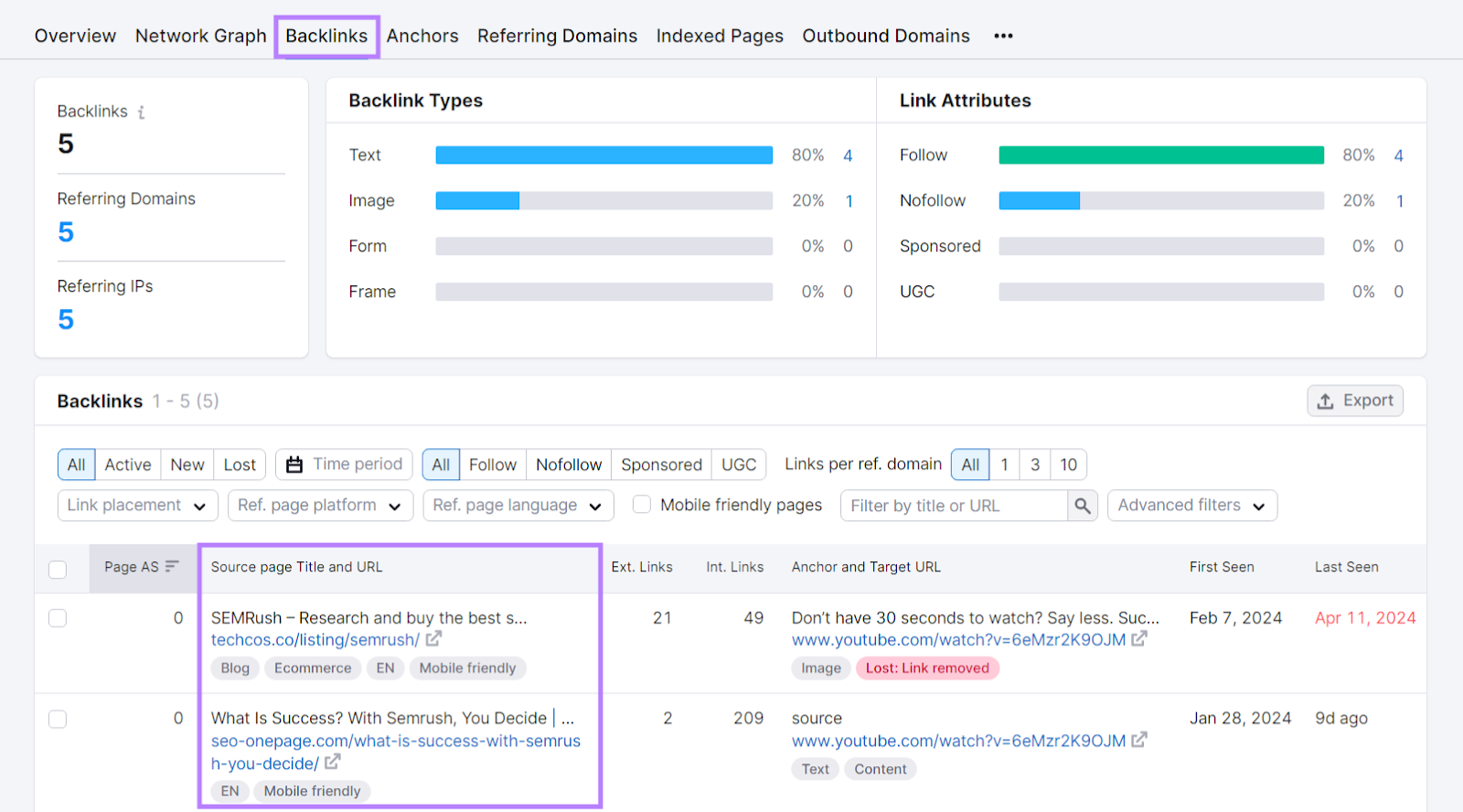
When you see that a website has given you a link, return to the Link Building Tool and click the checkmark. This moves the link to the “Monitor” list, where you can check to see if the backlink remains active.
Enforcing Copyright
Searching for your videos helps you monitor your content. And find instances where someone has used your video within their content without permission or proper citation.
This proactive approach lets you safeguard your work. And control where your brand shows up online.
The challenge to reverse video search with copyright enforcement is you might not find your videos. Especially if the offending party changes the thumbnail. Or alters the video.
But YouTube has tools like the Copyright Match Tool and Content ID for eligible accounts. These tools create video fingerprints—unique identifiers based on visual and audio output—for each video.
Then, YouTube notifies you if someone uploads a video with your video’s fingerprint on the platform. This can be an effective way of enforcing copyright if you publish your videos to YouTube.
Further reading: YouTube SEO: How to Boost Your Channels’ Visibility
Content Ideas
Reverse searches display related content, which can help inspire new content ideas.
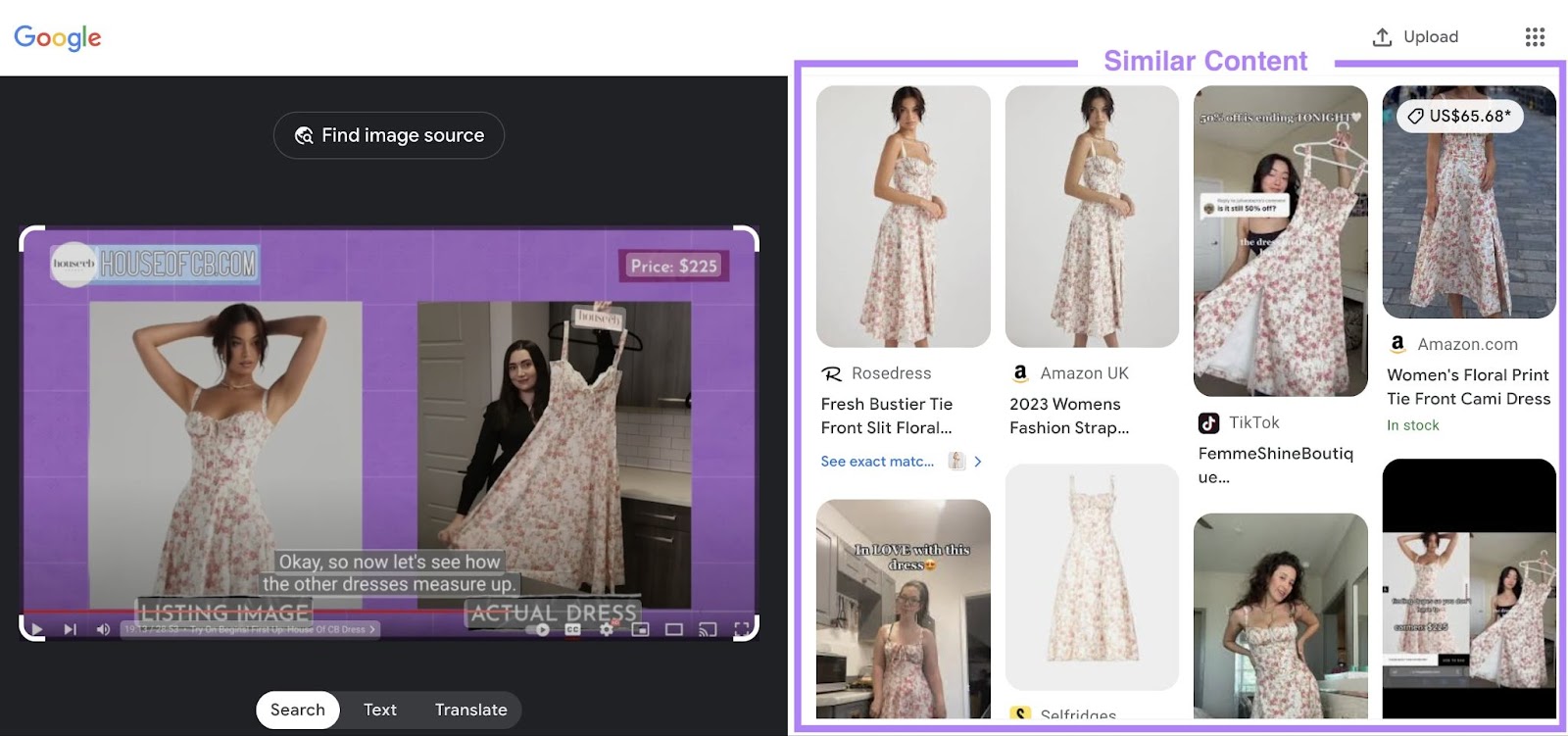
For example, say you perform a reverse video search with a cooking video featuring a certain dish.
This could yield search results featuring similar dishes with different presentations, ingredients, and cooking methods. These variations might inspire new content ideas.
Locating a Video’s Source
Reverse video search can help you find the original source of a video.
This can be useful if you want to fact-check the video. Or cite the video in a piece of content like a blog post or a video of your own.
For example, this YouTube video features a different user’s video on a trending cake. Reverse-searching for the cake featured in the video reveals its original source.

Identifying the source of the video lets you verify its authenticity and credibility. And ensures you give your audience accurate information.
Further reading: Video Marketing: The Ultimate Guide
Use Reverse Video Searches to Strengthen Your Brand
Video reverse searches help you with a variety of tasks. Including building backlinks.
Monitor each video backlink you get with our Link-Building Tool and Backlink Analytics. To strengthen your brand’s awareness and authority.
